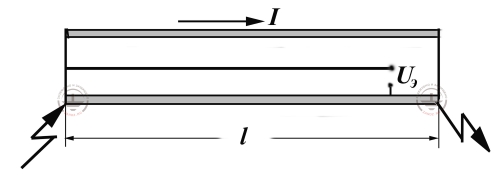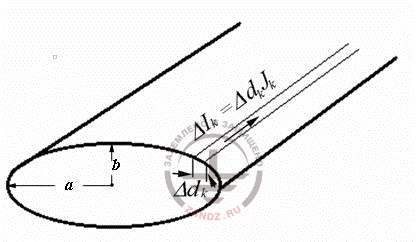The sixth part of the article "Lightning protection of aircrafts"
For a modern airplane, it is, probably, the most dangerous lightning impact. Any driver knows well about the duplication of mission-critical control systems. This is why, the hydraulic power of the breaks is split into front wheels and rare wheels. Damage of one system doesn't disturb the operation of the other one. Duplication of hydraulic systems is used in the airplanes. Electrical system can be duplicated, but with one significant stipulation. Damage of one electric circuit by electromagnetic pickup will almost inevitably be accompanied by the damage of all similar and duplicating circuits. There is food for thought, when constructing an air plane with a completely electrical drive.
Some people can object: "Why so pessimistic? While the majority of airplanes has metal fuselage, it means its on-board system will be screened from electromagnetic pickups". It cannot be objected. But even a solid metal screen won't save from pickup. We should not forget, that lightning strike direct current is running along the metal fuselage. Its electrical resistance is finite. In the result, there happens a voltage drop (fig. 9)

fig. 9. To the explanation of nature of thunderstorm overvoltage at the isolation of electric circuit relatively to the fuselage
If R0- resistanceper unit length of the fuselage, then on its length l from current I it will be
This voltage affects the isolation of any internal conductor relatively to the metal elements of the construction. It doesn't present great danger to the wide-format airplanes, because even at the resistance per unit lengh of the fuselage 2×10-6 Ohm/m at the lenth of ~50 m, the ultimate lightning current with the amplitude of 200 kA initiates the voltage of 10 V. In the perfect case of round cross section of the fuselage, the lightning current is equally distributed along the perimeter of its cross-section. In the result, voltages on the isolation of all the wires are absolutely equal, and voltages between the wires are identically equal to zero. As the system of air craft power supply is two-wired, thunder overvoltages of the studied type do not affect the equipment.
In practice, such a pleasant situation is not real. The shape of the wing and the fuselage if a modern air craft is far from perfectly circular. Thus, distribution of the lightning pulse current becomes uneven. In the greater extend the unevenness is demonstrated in the fuselage of the wing and tail and also in places of ligthtning channel contact with the external surface of the fuselage.

fig. 10. To the estimation of pulse current distribution over the non-circular cross section of the fuselage
An approximate quantity estimation can be carried out, having imagining the cross-section of the wing in the form of an ellipsoid of gyration (fig.10), for which there is a precise analytical solution
 (7)
(7)
Here x - distance from the center of the ellipsoid along its great axis. The maximal density per unit lenth of the current is characteristic for the top of the ellipsoid with a small radius of curve, where it exceeds the minimal density in the flat part of the fuselage in

times. Correspondingly overvoltages on the isolation of the internal conductor, relatively to the fuselage, change. They can manifoldly increase in case of laying the bundle in the place of maximal fuselage steepness.
Difference of cross-section of the fuselage from circular brings to the excitement of overvoltages in two-wire internal network. Their maximal value for the fuselage with the thickness d made of metal with the resisitivty ρ is estimated as
One should not calm himself thinking that at large dimensions of an air plane the voltage ∆U will be in the frames of dozens of volts. Such voltage is of course safe for any isolation, but not for a micro-processor device, in which the micro-schemes with the working votage of 3-5 W are used.
The magnetic field from the current in the fuselage is a principally new source of electromagnetic pickup in on-board circuits. It gets into its internal volume through technological holes, first of all, through the glass of illuminators of the body and the cabin. Computer estimations showed that in most unfavotable conditions the magnetic field in the cabin volume may increase 2000 A/m, provoking EMF of the density of about 10 kW in the contour 1m2. Here we cannot get along the special protective means.
E. M. Bazelyan, DEA, professor
Energy Institute named after G.M. Krzyzanowski, Moscow
Read more "7. Tests for lightning resistance"
See also:
- Useful materials for grounding and lightning protection designers
- Free webinars with the leading industry experts
- Real-life examples of grounding and lightning protection calculations
Related Articles:
 Lightning protection of residential and public buildings - answers to frequently asked questions in the design
Lightning protection of residential and public buildings - answers to frequently asked questions in the design
 Lightning Protection of Large Territories: Parks, Grounds, Plant Territories. Page 1
Lightning Protection of Large Territories: Parks, Grounds, Plant Territories. Page 1
 Lightning Protection of Large Territories: Parks, Grounds, Plant Territories. Page 2
Lightning Protection of Large Territories: Parks, Grounds, Plant Territories. Page 2
 Lightning Protection of Large Territories: Parks, Grounds, Plant Territories. Page 3
Lightning Protection of Large Territories: Parks, Grounds, Plant Territories. Page 3

